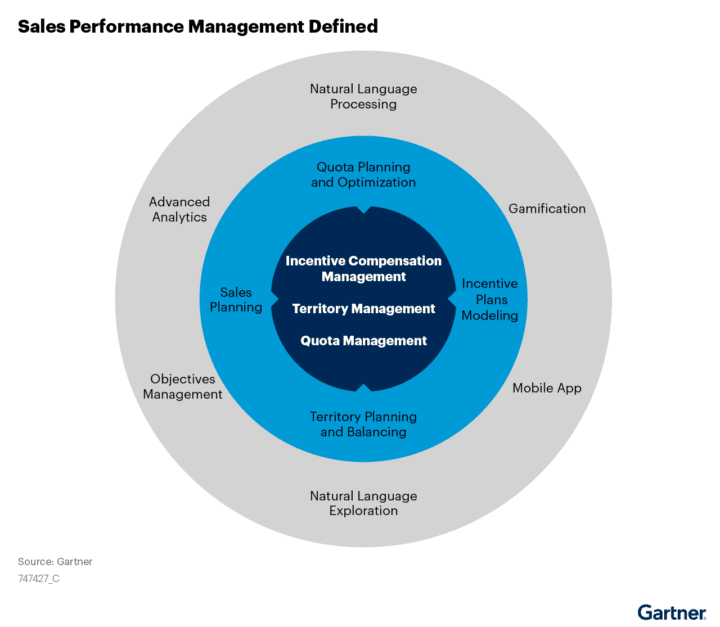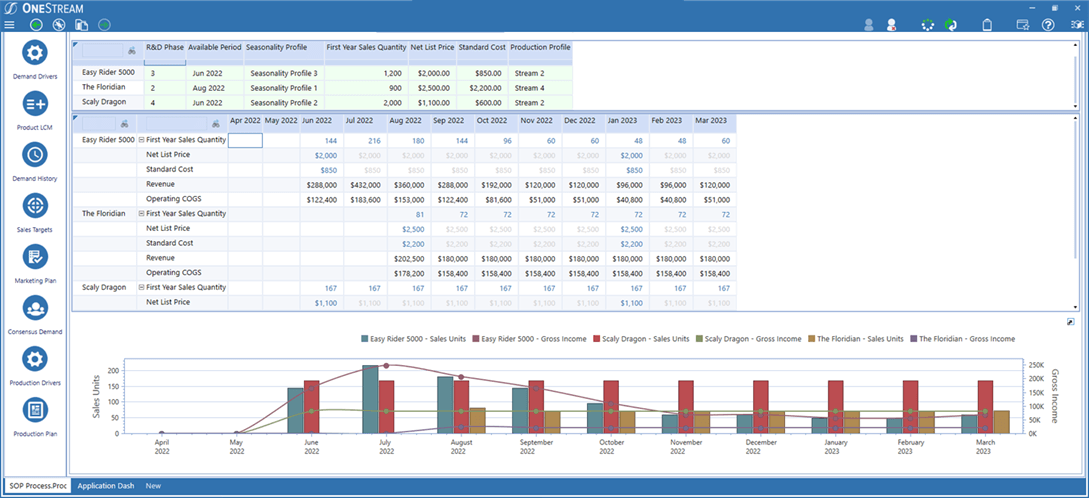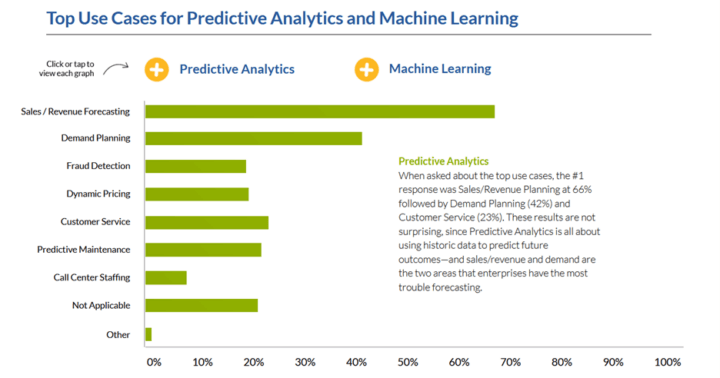Failing to Prepare Is Preparing to Fail
Planning sales is tough, even frustrating, for the average sales manager. Why?
A sales manager gets a top-down growth target from the CRO that’s always challenging – sometimes unrealistic – and then needs to come back explaining how that number will be met. That task can feel overwhelming, so the manager’s immediate reaction is to gauge pipeline health, check account and territory allocation, review incentives, and ultimately assess whether the sales team is fit for the endeavor.
And that’s how sales planning starts: with a worrisome thought and sometimes an exasperating feeling that the target can’t be met. What comes next? Well, many managers succumb to the challenge and accept the target without proper planning.
However, Sales planning is a crucial step of sales performance management (see Figure 1), and when done well, planning can boost sales performance.

At its best, sales planning considers collaborative approaches for planning with other functions, relies on product and service knowledge, measures full financial impact, and leverages new technologies to maximize and sustain growth.
Best Practices in Sales Planning to Boost Sales Performance
Sales planning is not only a critical process step in sales performance management but also a vital component of an xP&A or a connected planning footprint. When aspiring to achieve higher revenue growth, companies should consider sales planning as a key input for better sales execution. But they must plan sales as a component of a broader integrated business planning or connected planning process, in close connection with Finance, Operations, Marketing, Workforce, and more.
Here are 5 best practices that can help companies connect the dots between planning across the organization and sales performance management:
- Adopt a collaborative planning approach – Sales must be open to sharing the sales plan with other functions to ensure they can support the sales plan along the way. Then, xP&A solutions can be used to instill cross-functional collaboration with Finance, Marketing, Supply Chain, and HR.
- Incorporate financial metrics into sales planning – Sales planning must look at margin impact and the cost of “things” needed per every % point of additional revenue (see Figure 2). This broader view caters to healthier revenue growth and helps companies make better decisions when planning sales. The approach also stays true to an xP&A or integrated business planning design, in which Finance is the center of planning activities across the organization.

- Consider the Sales team’s expertise in the product and services – This consideration applies mainly for large organizations with a wide product portfolio. A product won’t sell if sellers can’t pitch its value. In other words, companies can’t get their sellers to position a product when they can’t understand what it is used for. Product expertise should therefore be considered a key input for sales and territory planning and for the marketing plan, to align campaign and promotion planning accordingly. Informing the supply plan is also necessary to avoid inventory piling up of unwanted goods.
- Factor bench time into the plan – The salesforce will inevitably need time for onboarding and continuous training, admin tasks, vacation, and other non-client-facing tasks. Onboarding, for example, takes time to ramp up and get reps to become fully productive. A solid sales plan must incorporate these factors into the data models.
- Leverage data and technology – Companies must build a sales forecast that can help determine which customers are likely to buy and which events may boost or decline sales performance. A recent market survey conducted by OneStream showed that the top use case for predictive analytics and machine learning is to improve revenue/sales forecasting (see Figure 3). Some solutions can leverage machine learning to model thousands of scenarios, provide a high-accuracy forecast within minutes, and link it with revenue and margin targets.

Key Takeaways
As with most things in life, success in sales performance management begins with good planning. Adopting the best practices outlined above can help companies achieve and sustain revenue growth.
A good starting point relies on implementing one unified CPM solution with strong forecasting and modeling capabilities that aligns sales and financial plans by blending different types of data to generate insights linked to financial KPIs. Ultimately, this approach offers an excellent way to build collaboration among teams.
Learn how OneStream can set your sales planning up to the game and achieve higher revenue growth.
Get Started With a Personal Demo



